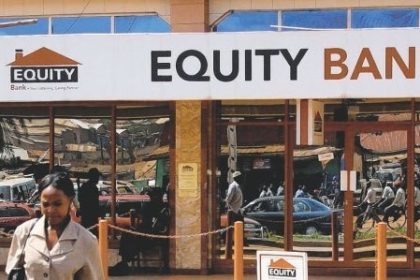Uganda policy rate suggests growing need for economic stimulus
KAMPALA-APRIL 6- The decision by Uganda’s central banker to ease the policy rate by a single percentage point may be a welcome reprieve for business but it points to ongoing efforts to arrest further contraction of an economy in a tight spot.
6- The decision by Uganda’s central banker to ease the policy rate by a single percentage point may be a welcome reprieve for business but it points to ongoing efforts to arrest further contraction of an economy in a tight spot.
After holding the CBR at 17 percent for several months, the Bank of Uganda on April 4 pulled the key rate back to 16 percent. According to BoU Governor Emmanuel Tumusiime-Mutebile the decision whose impact will take time to feed through to the markets, was prompted by a need nudge up an economy that saw constrained growth during the first quarter of calendar 2016.
Turned away by the high lending rates that followed earlier policy hikes, uptake of credit by the private sector has been in decline, slowing production. Commercial bank lending rates were edging towards 26percent as the industry staggered its response to earlier policy decisions.
“Lending rates on the outstanding stock of private sector credit have continued to edge up, reflecting a lagged response to monetary policy tightening,” the Bank said adding that lending rate on shilling denominated loans had risen 0.6 percentage points between January and February 2016 to settle at 25.2 percent.
The increases in the lending rates mainly affected loans to agriculture, manufacturing, mortgages and land purchases and personal and household loans.
“Given that the inflation outlook has improved and to ensure that real economic growth remains close to potential, the BoU believes that it is warranted to cautiously ease monetary policy,” Mutebile said while conceding that economic growth during the first quarter was still below potential.
Although headline inflation dropped from 8.5 percent in December 2015 to 6.2 percent in March and core inflation from 7.6 to 6.9 percent over the same period, the economy remains vulnerable to sluggish global growth and declining commodity prices. The two factors are expected to impact growth next financial with the forecast now been revised downwards to 5.5 percent.
The BoU believes both headline and core inflation will plateau out in the 6.5 percent, plus or minus a percentage point, to the first half 2016, before gradually settling back to the medium term target of 5percent in the first quarter of 2017.

 Shell Club rewards first winners with brand new motorbikes in Mbale
Shell Club rewards first winners with brand new motorbikes in Mbale
 CSBAG roots for increased funding for renewable energy
CSBAG roots for increased funding for renewable energy
 Equity walks tried and tested path to deliver solid half-year
Equity walks tried and tested path to deliver solid half-year
 Nile Breweries primes retailers for brave new world
Nile Breweries primes retailers for brave new world
 Uganda calls for collaboration with airlines in fight against illicit trade in wildlife
Uganda calls for collaboration with airlines in fight against illicit trade in wildlife
 Airline industry top guns dust-off passports for Uganda hosted 55th AFRAA annual meet
Airline industry top guns dust-off passports for Uganda hosted 55th AFRAA annual meet
